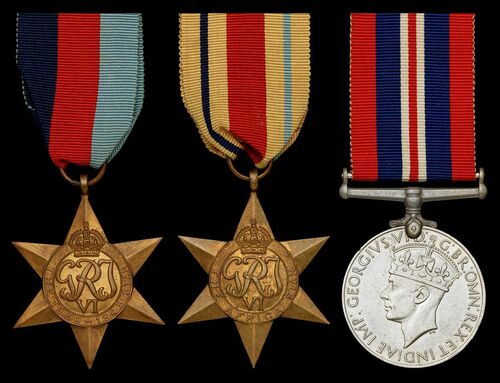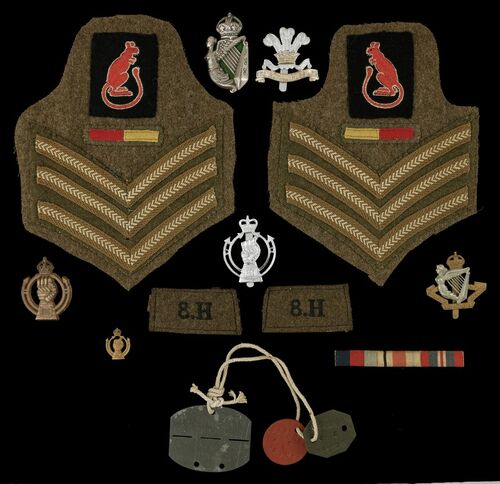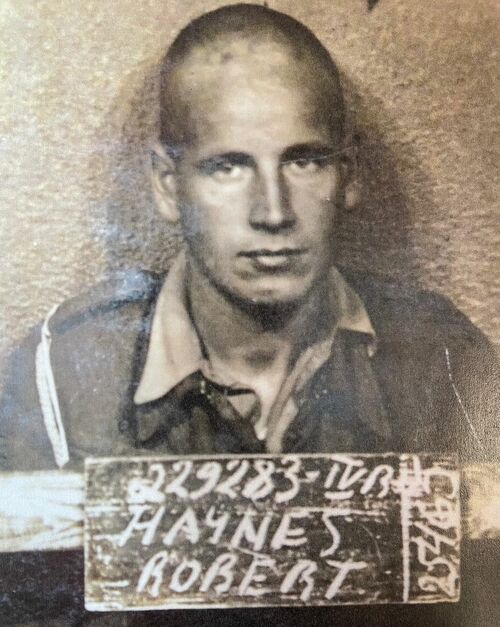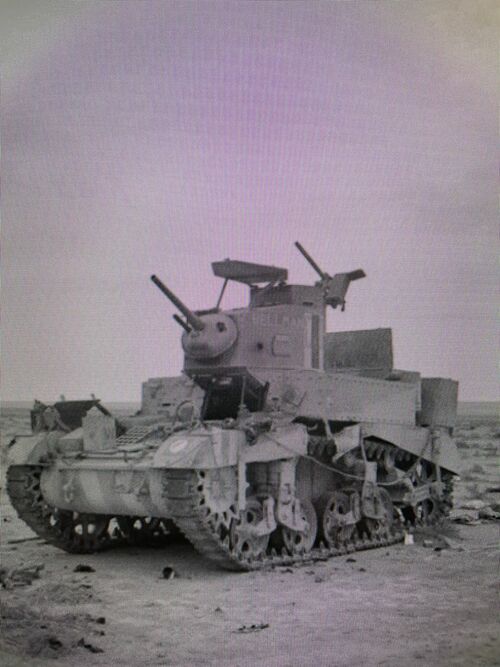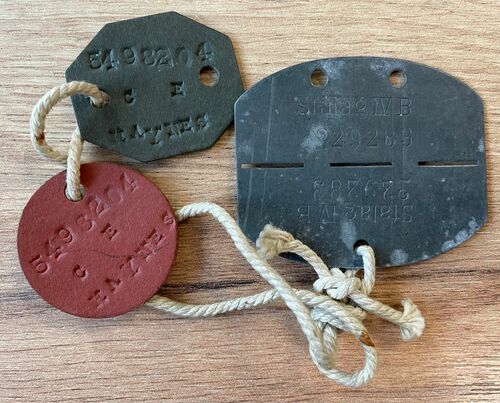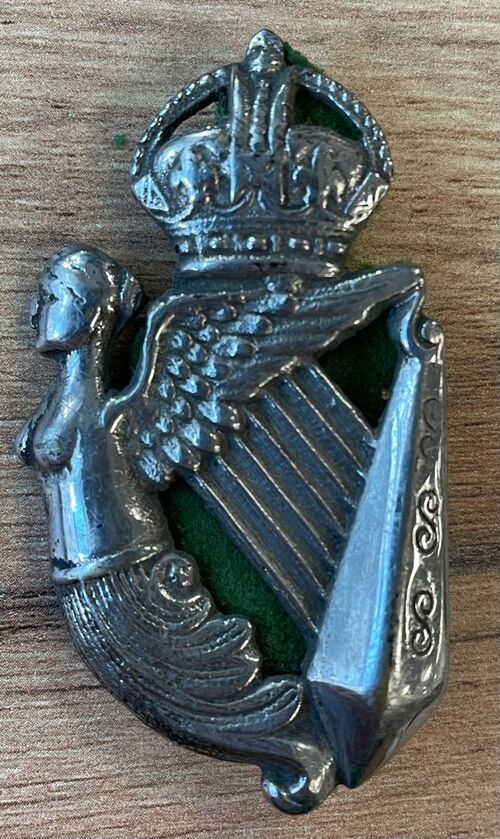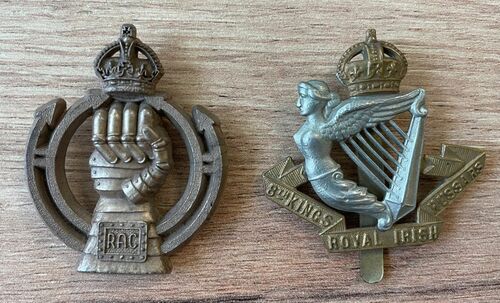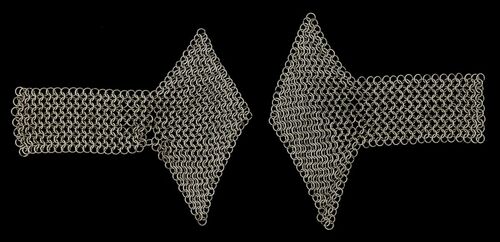Auction: 23113 - Orders, Decorations and Medals - e-Auction
Lot: 500
A well-documented campaign group of three awarded to Sergeant R. H. Haynes, 8th King's Royal Irish Hussars, Royal Armoured Corps, late 10th Royal Hussars (Prince of Wales's Own)
Haynes was wounded in action on 20 November 1941 during the famous clash against the Panzerregiment 5 during Operation Crusader and thence became a Prisoner of War on 29 June 1942; he also had to endure the privations of 'The Long March' in 1945
1939-45 Star; Africa Star; War Medal 1939-45, all unnamed as issued, good very fine (3)
Robert Henry Haynes was born at Southampton on 15 April 1918 and was a bakers assistant by trade when he enlisted there on 18 May 1937 for 6 years with the colours and 6 years in the Reserve. He enlisted originally into the 10th Royal Hussars and later served with the 8th Royal Irish Hussars and Royal Armoured Corps.
Wounded - Crusader
In November 1941, the 8th Hussars found themselves as part of the 4th Armoured Brigade and were thrown into the action against Panzerregiment 5 on 19 November. They saw actions against Group Stephan in their M3 tanks at the Gabr Saleh, Sidi Rezegh. By the end of this huge contact, they could count having accounted for at least twenty of the enemy tanks themselves. Haynes was wounded in action. Please see A reassessment of the tank battle between 4th
Armoured Brigade and Panzerregiment 5 during
Operation Crusader in North Africa on
19 November 1941 by Andreas Biermann of SOAS (University of London) for more details.
In the bag
Recovered from his wounds, Haynes was again back in action and found himself taken a Prisoner of War on 29 June 1942. This came after the heated Gazala Battles in which his unit shared from 26 May-21 June. It seems likely that he was part of 'C' Squadron and would have been present in the action south of Fuka on 28 June when the Squadron went into action with the enemy at range. On 29 June the Squadron learned that the enemy in the North had again penetrated and was reported in the Bir Umm Habib area, about 40km to their East, and moving south-east. The Squadron was ordered to withdraw to the area Niswet - Cabbel - Mawaa. A bad sandstorm during the day restricted visibility. At this time there were only five tanks left in the Squadron that were runners, and three of these had to tow three others that were broken-down. On reaching Mawaa, enemy AFVs and MET were encountered to the East and they provided a shoot for our Gunners. However, it was now evident that, by enemy infiltration to the south-east, the Squadron’s line of communication was very precarious, in fact the Squadron was, to all intents and purposes, surrounded. During the march Captain Ames was badly injured in the thigh by the snapping of a towrope, and had to be evacuated. Viscount Garmoyle, the Brigadier of 7 Motorised Brigade, decided that the only way to break through was to make a night march of five miles West, ten miles North, and then due East until he hit on our own lines. This did not come off and no more took place that night (War Diary refers).
Haynes found himself at Camp 75, Bari, from August-September 1942, then at Camp 70, Fermo from September 1942-September 1943. Moved to Germany he was at Stalag IV B (Muhlburg) from September 1943-September 1944 and finally at Stalag 357 (Falling Bostal) from September 1944-April 1945.
In April 1945, having been held in cramped conditions with very little to eat for several years, the captives were issued with orders to evacuate the camps and to forcibly march hundreds of miles west into central German territory.
Tens of thousands of men were involved in these events, thousands of whom perished. Most marched many hundreds of miles, sometimes 20 miles a day, before being liberated by advancing Allied troops. Many of the dead succumbed to starvation, exposure, and disease. Some were shot by guards for attempting escape or simply being unable to continue.
Much has been written and documented about this horrific march. Haynes survived and was liberated on 2 May 1945.
Sold together with Soldier’s Service and Pay Book (5498204 Sgt. R. H. Haynes, R.A.C.), Soldier’s Release Book Class “A” and various related documents, sergeant’s cloth rank insignia (2) both with Desert Rats embroidered patch, two fibre identity discs (5498204 HAYNES), P.O.W. metal identity disc (Stalag IVB 229283), pair of metal shoulder scales, pair of ‘8.H’ cloth shoulder titles, and 5 cap badges for R.A.C. (plastic and metal), 8th Hussars (2) and 10th Hussars, and a prayer book ‘The gift of S.P.C.K. For use of Prisoners of War’.
Subject to 20% VAT on Buyer’s Premium. For more information please view Terms and Conditions for Buyers.
Sold for
£450
Starting price
£200

